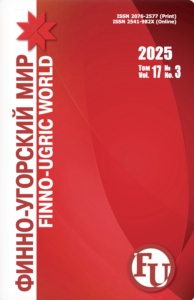DOI: 10.15507/2076-2577.011.2019.02.143-151
Ivan A. Golovnev,
Candidate Sc. {History}, Research Fellow,
Peter the Great Museum of Anthropology and Ethnography
of Russian Academy of Sciences
(St. Petersburg, Russia), golovnev.ivan@gmail.com
Introduction. Visually-anthropological experiments in Russia have more than a century of history, reflected, in particular, in the corpora of Soviet ethnographic films in the 1920s – 1930s. This article, based on textual and visual materials, introduces information about the ethno-film «Hunting and Reindeer Breeding in the Komi Region» (1927) as a multi-layered visual-anthropological document. The paper considers the specific features of film history on the evolution among Komi hunters and reindeer herders during the period of cultural and economic transformations in the USSR in the second half of the 1920s, created in the mentioned film, in the context of the Soviet film production.
Materials and Methods. Due to the specifics of silent cinema, the final film «Hunting and Reindeer Breeding in the Komi Region» is a kind of cinema-text consisting of approximately the same number of film frames and text captions interspersed in the narration. That is why the method of analyzing the film as a visual-text work was its research transcript – presentation in the form of a film text.
Results and Discussion. Based on the archival data and published works of contemporaries, the authors traced the evolution of the film project in connection with parallel processes in the state national-cultural policy and in ethnographic science.
Conclusion. Considering the film in the socio-historical context, the authors conclude the phenomenon of ethnographic film as an effective form of research knowledge, which allows fixing the cultures of what is being filmed and shooting, and broadcast in time not only actual events, but also their so important for anthropological study emotional context; as well as the potential of cinema as an informative historical source.
Key words: ethnographic cinema; visual anthropology; Komi; USSR.
Acknowledgement: This work was supported by a grant from the Russian Foundation for Basic Research, project No. 18-09-00076, “Traditional Ethnocultural Communities of the North in Ethnographic Cinema”.
For citation: Golovnev IA. Traditional ethnocultural communities in Soviet cinema: «Hunting and reindeer breeding in the Komi region». Finno-ugorskii mir = Finno-Ugric World. 2019; 2: 23–31. (In Russian)






















